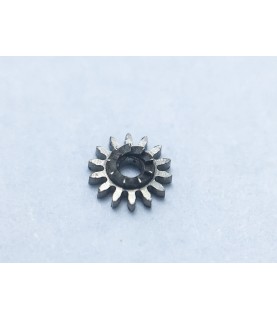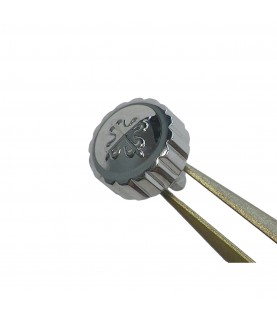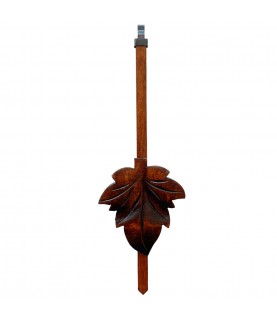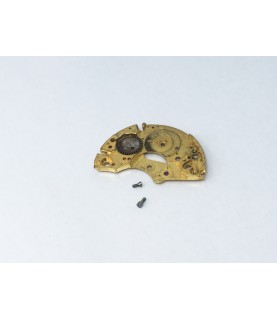The Devil Is In The Detail: Patek Philippe Calatrava Weekly Cale

A completely new Patek Philippe has joined the rich range of "small complications" in the Geneva watchmaker's repertoire: a weekly calendar. It's a first for the manufacture, which over the course of its venerable history has produced an entire anthology of calendar watches, from the simple date window to the highly complex century perpetual calendar (which won't require any adjustment until the 28th century), with a plethora of perpetual calendars (to be corrected in 2100) and the famous patented annual calendar of 1996. All that was missing was a weekly calendar. But not any longer!

Take a closer look Looking at this watch, which is fresh off the bench, you have the impression that it's been around forever. It already looks like a Patek Philippe classic. And yet this impression is completely false, because Patek Philippe has never offered a week number function before. So, where does this impression come from? Probably from a host of subtle details that are invisible at first glance, but which exert a tangible effect on the viewer. What is most striking from the outset is its great legibility. The eye is not forced to scrutinise the dial to understand what it's seeing. The hierarchy of time and calendar indications, supplied by five central hands and a single window, is crystal clear.

This refreshingly lucid geometry is displayed in black against a silvery opaline dial. The chromatic high point is the hammer-shaped red tip of the two central hands, one pointing to the day of the week (in a ring around the centre) and the other to the month and associated week number (on the two concentric scales around the periphery). Only the date is displayed traditionally, in a window at 3 o'clock. But the display as a whole, which might have come across as overly rigid, technical and ruthlessly utilitarian, instead has a unique charm. The dial is visually appealing. But what makes it so seductive?

On paying closer attention it becomes clear that the singular resonance of this piece comes not only from its perfectly centred geometry, but also, and perhaps mainly, from its typography. Not one figure, not one letter is like another. Each one is unique, and slightly different from all the rest. And that's because it is all done by hand. The lettering is the work of one of the manufacture's designers, adopted and replicated exactly on the dial. It was a rather inspired decision, taken by Thierry Stern himself, we're told.

And it's probably the lettering that immediately sets the vintage tone of this watch. But it's a kind of vintage that we haven't seen before, embodied in this unique display with its discreetly poetic interpretation of hand lettering, its whiff of calligraphic nostalgia. The vintage appeal is enhanced by the round Calatrava-style case, with its 40 mm diameter and height of 11.18 mm, in steel – not a material we're used to seeing from Patek Philippe. The generous bezel and two-tiered gently curved lugs draw inspiration directly from a one-of-a-kind model dating back to 1955 (the Reference 2512, which connoisseurs can see at the Patek Philippe Museum in Geneva). Top it off with a subtle box-type sapphire crystal, and you have the Calatrava Weekly Calendar. We think it's a very fine watch; a keeper, without a doubt.

New base movement So, what do we have under the dial? The week day and week number functions are supplied by a mechanism partially integrated into a brand new self-winding base movement, the calibre 26-330. While based on the calibre 324, it features several innovations and optimisations. In order to avoid any risk of the seconds hand vibrating, the traditional centre second pinion with friction spring has been replaced by an anti-backlash third wheel. This component made using the LIGA process from a nickel-phosphorus alloy, finished with a gold-copper-iridium coating, stops the seconds hand vibrating thanks to the use of long split teeth, each with its own tiny 22-micron leaf spring.

The teeth of the anti-backlash third wheel engage with the teeth of the centre second pinion to suppress vibrations. A stop-seconds mechanism has also been added, which allows the wearer to stop the balance, set the exact second and set it in motion again when the crown is pushed home. Some highly technical improvements to the automatic winding system have resulted in improved performance and reliability, by replacing some parts subject to friction, and thus requiring additional adjustment, with high-tech components. Thus, the traditional uncoupling yoke has been replaced by a new patented clutch wheel (the result of a highly complex manufacturing process, we are told) that drives the mainspring barrel in one direction and uncouples it in the other. Another optimisation is the addition of a reduction wheel that is uncoupled from the automatic winder when the watch is wound manually. Multiple efforts to reduce friction, and thus increase performance and reliability, all combine to make this movement what it is.

Semi-integrated mechanism The semi-integrated mechanism of the weekly calendar includes 92 additional components, for a height of just 1.52 mm. This brings the total height of the movement, inclusive of the semi-integrated mechanism, to 4.82 mm, with 304 components. This extreme thinness comes thanks to a baseplate specifically developed and machined to accommodate the mechanism.

The day display is driven by a seven-pointed star placed in the centre of the movement, on the hour wheel. The week wheel with its 53 teeth (because, every five to six years, a year has 53 weeks rather than the usual 52 – the next time this happens will be in 2020) is driven by a second seven-pointed star with an extended Sunday tip, which starts off the new week on a Monday, in accordance with the ISO 8601 standard. In order to avoid energy consumption peaks (the automatic movement has a power reserve of at least 35 hours, up to a maximum of 45 hours) the calendar displays advance semi-instantaneously in discrete steps.

Another important point is that, as a so-called "useful" complication, it should deserve its title. Accordingly, the safety features implemented by the movement's designers allow the user to make the necessary corrections at any time of the day or night. For the weekday and number, adjustments are made via two pushers placed at 8 o'clock and 10 o'clock respectively. The date is corrected on the crown (pulled out halfway – the maximum extension is used to stop the balance in order to set the exact time). It bears repeating: this Calatrava Weekly Calendar is successful in every respect, and certainly has a promising future ahead. After all, as people sometimes also say: "God is in the detail".





